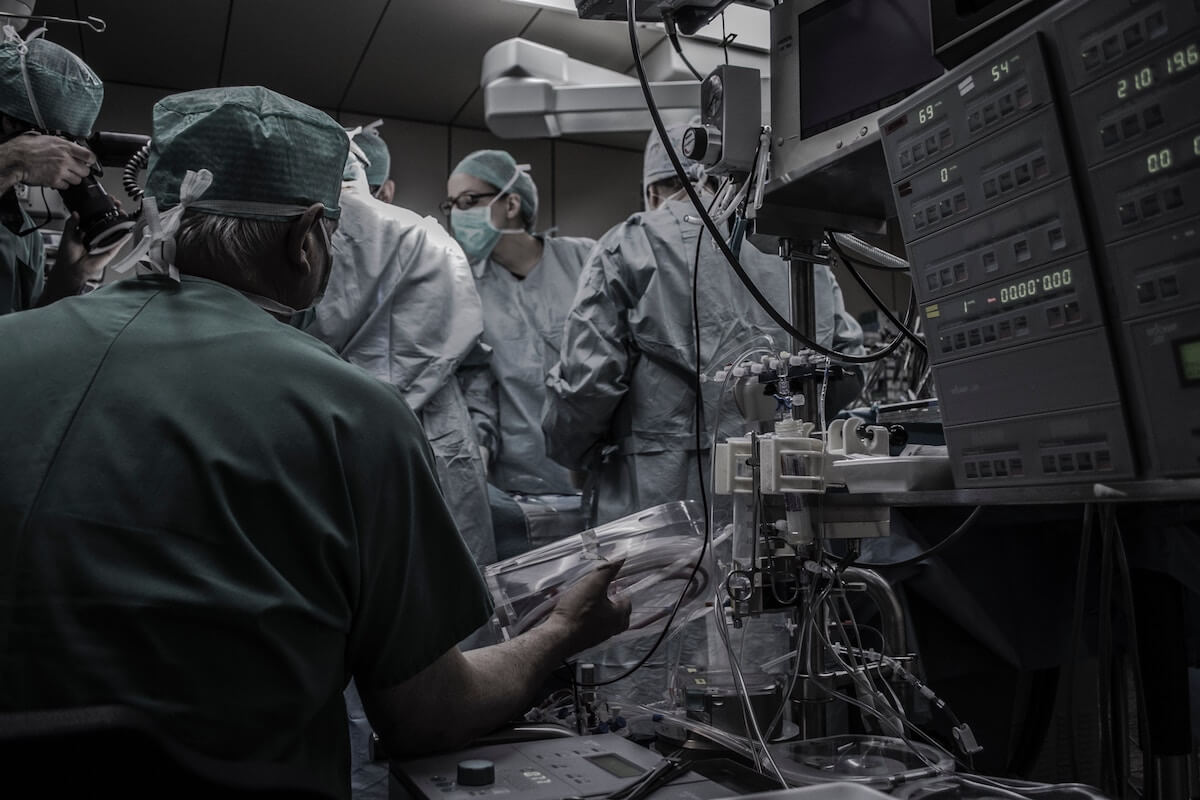Beyond Performance Enhancing Drugs
We write this piece as the 2018 Winter Olympics are ending. The Olympics, including a controversy around Russian athletes and banned substances, illustrate what we mean by augmented humans and why the concept of human augmentation might be important not just to world-class athletes but also the rest of us. The Slate addressed this same subject in articles as long ago as 2013. A website labeled Strategic Business Insights introduced the subject on its site in January of 2017.
The dictionary definition of “augment” includes both increasing something and adding to it. Human augmentation includes both. Activities to improve human health and performance have been ongoing for millennia and include teaching and learning, diet and exercise, training and practice, equipment and tools. Eyeglasses, hearing aids, artificial limbs are only a subset of the physical devices we wear or use to perform better.
Increasing Human Augmentation Activities
However, we anticipate a sharp hockey stick-like uptick over the next several decades, which is likely to affect us all. It began a few decades ago with surgical techniques such as plastic surgery and artificial chemicals for both health and performance enhancement.
Much of this augmentation activity repaired or fixed aspects of health or performance that were below normal and fell under the umbrella of “medicine.” But some of it has always been to move the health and performance of some humans way beyond normal to extraordinary. (Wikipedia calls this half of the range of augmentation “human enhancement” and lists many references on that page.) Ideally, the activity starts with humans already above normal (what we call talented) and makes them even better. We provide special academic instruction to our best and brightest and special coaching and training to our most talented. We provide specialized services, including plastic surgery, orthodontia, and other modifications, to models, actors, bodybuilders, and others who seek to enhance their appearance.
A primary focus has long been on athletes, so much so that we have even felt compelled to develop special rules about what substances and equipment athletes can put in and on their bodies. Additional focuses include military personnel, as Noah Shachtman wrote about for Wired, as well as musicians and other performers. We have fewer rules for our military personnel and musicians than for athletes but those may be coming in the future. Most important, applying science and technology to enhancing human health and performance is spreading beyond athletes, musicians, and warriors. Firms have always considered various bundles of sticks and carrots to get better performance from their employees. Some are investigating the technologies used with athletes, musicians, and military personnel, along with others more closely tied to aspects the firm wants to enhance, such as creativity or adaptability. The latest prediction from Peter Diamandis of Singularity University is that by 2022, artificial intelligence augmentation will be a requirement for most professional jobs.
Most important, applying science and technology to enhancing human health and performance is spreading beyond athletes, musicians, and warriors. Firms have always considered various bundles of sticks and carrots to get better performance from their employees. Some are investigating the technologies used with athletes, musicians, and military personnel, along with others more closely tied to aspects the firm wants to enhance, such as creativity or adaptability. The latest prediction from Peter Diamandis of Singularity University is that by 2022, artificial intelligence augmentation will be a requirement for most professional jobs.
Human Augmentation Versus Task Automation
We distinguish between “automation,” which we define as using science and technology to improve the performance of a task, and “human augmentation” as using science and technology to improve a human. Using a fixed set of symbols to indicate digits and letters (writing) improves the ability to record and transmit human ideas and stories. But it also improves the ability to record and transmit machine data, such as temperature. Computer storage, whether spinning disks, electronic circuits, or even DNA, improves recording. Human memory augmentation, whether through mnemonic training and techniques or brain implants, improves the ability of humans to store and recall information.
Automation (task performance enhancement) has also been ongoing for millennia, often using the very same science and technology as human augmentation. A telescope or a microscope can enhance the ability of a human to see, just as it can enhance the ability of a camera to take photos. We also see a sharp hockey-stick uptick in activities such as machine learning, additive manufacturing, and autonomous vehicles. O’Reilly makes this same distinction between human augmentation and task automation in an article on The Atlantic website, although he does not use our terms. Anupam Rastogi made a similar point distinguishing “intelligence augmentation” from “artificial intelligence.”
Types of Human Augmentation
We can array various types of human augmentation activities along dimensions. One dimension is from mental to physical in the part or function of the human augmented. It is a spectrum rather than two separate choices. A brain implant for memory, for example, augments both the physical brain and its mental functioning. O’Reilly makes this point in his article cited above, describing “a complex dance” between the mental and physical types.
A second dimension is from mental to physical in the technology. Neural-linguistic programming, mental imaging, and other “teaching techniques” are examples of “mental” technology. Implants, chemicals, and surgery are examples of physical technologies.
A third dimension is from direct to indirect. For instance, one can sculpt parts of the body through surgery (direct) or intense exercise (indirect). A lot of “practice” by athletes, musicians, warriors, and others produces changes in muscles and connections in the brain. It is reported that equivalent practices (indirect) can improve sight, hearing, smell, touch, and taste as well as speed, strength, and body shape. Lasik surgery changes eye shape directly; perhaps targeted exercises could change it indirectly.
A fourth dimension involves the permanence of the change, e.g., eyeglasses versus Lasik surgery, detachable stilts versus leg-length extension, lift-assist armor versus muscle strengthening through weightlifting exercise or various chemicals.
Rob Tracinski has identified 5 technologies for the enhancement side of augmentation (and often the medicine side as well). In his discussion, he identifies both physical and mental targets of these technologies as well as permanent and temporary items.
- Bionics and Prosthetics (artificial limbs)
- Brain Computer Interfaces
- Neurotechnology (brain implants)
- Nootropics (“mind” drugs)
- Gene Editing (in our scheme, these would be “physical” and “direct”)
Similarly, Elise Bohan has identified 10 “body modification” technologies and predicts they will be with us “in the next decade.” They are:
- RFID Chips
- Exoskeletons
- Real-Time Language Translation
- Augmented Vision
- Smart Contact Lenses
- 3D-Printed Body Parts (she distinguishes these from lab-grown parts)
- Smarter Drugs
- Brain-Computer Interfaces
- Designer Babies
- Enhanced Sexual Organs
Bohan’s focus is on the next 10 years. We would suggest that over a longer time period, many items would expand into categories. For instance, smarter contact lenses could expand into smarter devices for all our senses and enhanced sexual organs into enhanced organs of all types. We would also consider real-time translation “task automation” rather than human augmentation, unless it involved modification to the body or mind of a human.
We note that additional augmentation often comes with tradeoffs, such as the adverse side effects that lead most athletic organizations to ban a number of “performance enhancement” substances. Such augmentation also tends to be more specialized than the normal part being augmented. Even in the old days of indirect augmentation through training, one often saw that advanced speed may mean reduced strength and vice-versa. For example, one could train for world-class performance in sprints or marathons, but not for world-class performance in both. Prosthetics that are really effective for running or swimming are usually too specialized to be good for general use.
Two Major Implications for All of Us
We see two major implications of this sharp uptick in the activity of human augmentation and the number and type of humans augmented. First, we are still struggling with the ground rules to apply to athletic performance, let alone all the other aspects of health and performance we are and will seek to enhance. We as individuals, as organizations, and as governments will face risk/reward balancing in several areas we have not considered before. The opioid crisis shows us what happens with the misuse of medical substance designed just to relieve pain; imagine what could happen as we develop more substances that enhance performance.
Second, much of task automation is designed to, and does, reduce or remove human involvement in the task. So far in our history, the gains in task performance have created new opportunities for humans that outweigh the reduction of human involvement in the automated task. Using humans elsewhere has not been smooth. Often the new opportunities require humans with different skills and training than what was required for the old task. In Washington State, for example, very few lumberjacks in Forks (a town in the highly forested western peninsula) will become programmers in Redmond (the Seattle suburb home to Microsoft).
However, we also see two positive effects of human augmentation. First, task automation might in some cases increase the effectiveness of the human, rather than removing him or her. Much of the advance in car design, for instance, makes the human a better driver (warning lights, auto braking, cruise control). Some of this is related to comparable efforts for pilots, where the explicit goal has been to make the pilot better, rather than removing him or her from the cockpit. The task might be redesigned to take advantage of human augmentation, as is done now to enable people without legs to drive or ride a bicycle. O’Reilly discusses this point at length in the article cited above. Georgia Tech has an Institute for Robotics and Intelligent Machines with a research area entitled “Medical Robotics & Human Augmentation” that appears to address some of this approach.
Second, human augmentation will help with adaptations forced by task automation. Boeing, for instance, has some of its mechanics wear special headgear that annotates what they see to help them assemble planes. This headgear not only constitutes a design for using humans better, it also expands the range of humans who can perform the task, since new mechanics need not undergo hours of training to know what the special headgear shows them. While special headgear is unlikely to enable lumberjacks to write computer code, it may well enable them to fit into many roles that would otherwise take years of retraining.
Join the Catalyst Monitor
Join our community, where we push out regular insights to help maintain situational awareness on technological and socioeconomic trends.




